The 5 Best Exercises for a Full-Body Workout
With these multifunctional exercises in your back pocket, you'll be able to get a full-body workout in anytime, anywhere.
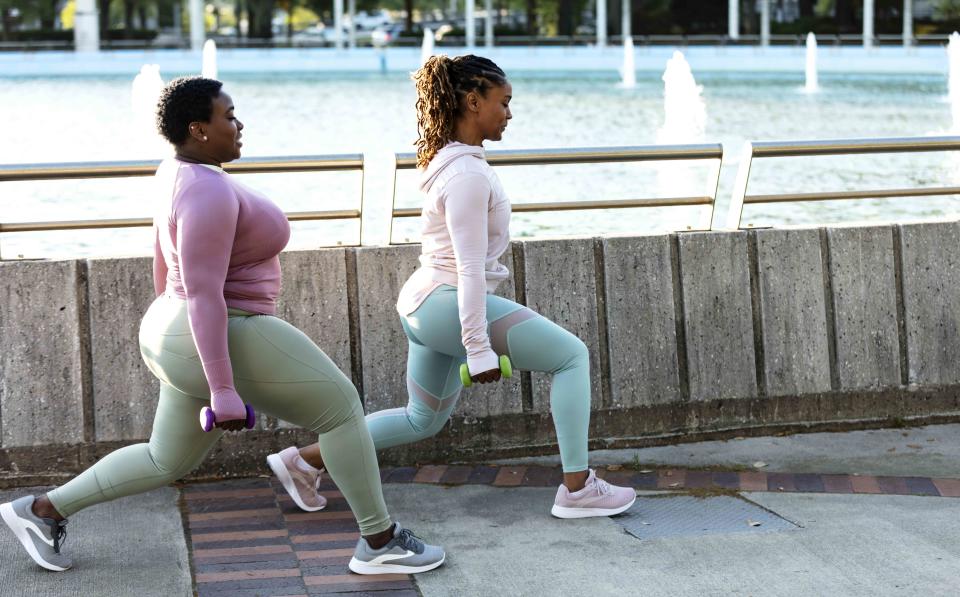
kali9/Getty Images
Fact checked by Haley Mades
Getting a full-body workout is much easier than you think and doesn’t require hitting up every weight machine at the gym (or even going to the gym). While weightlifting is the golden standard for muscle-building, there are numerous other exercise moves and routines you can do just about anywhere (and without any equipment) to strengthen and activate your entire body. When you’re ready to get moving, try these five proven exercises for the ultimate full-body workout.
Workout 1: Squats
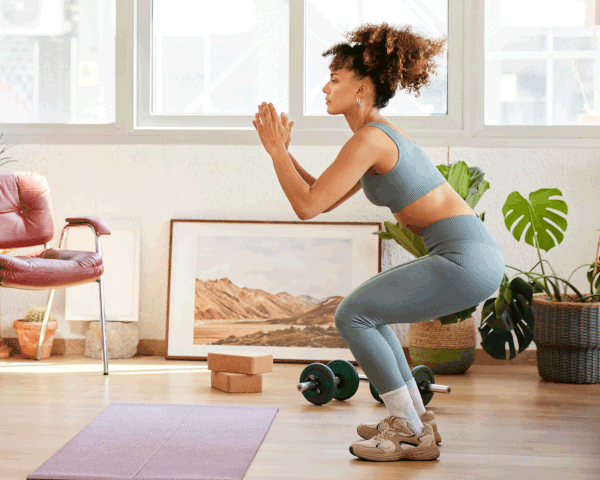
Getty Images
Squat Benefits:
Squats are a tried-and-true strength exercise that’s especially beneficial for building leg and glute strength. They’re also an important functional exercise, as being able to do squat-like movements in everyday life (like bending to pick up toys, boxes, kids, and luggage) is key for staying injury free and moving with ease. This exercise can help you build speed as well, Gaines says.
How to Do Squats:
Squats are a simple movement, but they’re also easy to do with improper form—and poorly executed squats can lead to injury or unnecessary aches and pains. The simple solution: Learn and master safe squat form. Here’s how to do a squat correctly, according to Travelle Gaines, CPT, the sports performance coach and head of athletic performance at Blocks Nutrition.
Start by standing with your feet directly under your hips. Hinge at the hips and sit back like you would into a chair until your thighs are parallel to the floor, or until your legs are at “no less than a 90-degree angle,” Gaines says. Next, stand up again quickly, engaging your core and glutes as you rise. “You can either use your body weight or add more resistance [with weights].”
To maintain proper form, Gaines recommends keeping your toes pointed straight and hip-width apart (toes pointed outwards can lead to knee pain). In addition, your knees should never come in front of your toes.
Squats can also be modified if a traditional squat is painful to do. Doing a squat against a wall can help give your back support and also promote proper form, alleviating knee pain.
Workout 2: Push-Ups
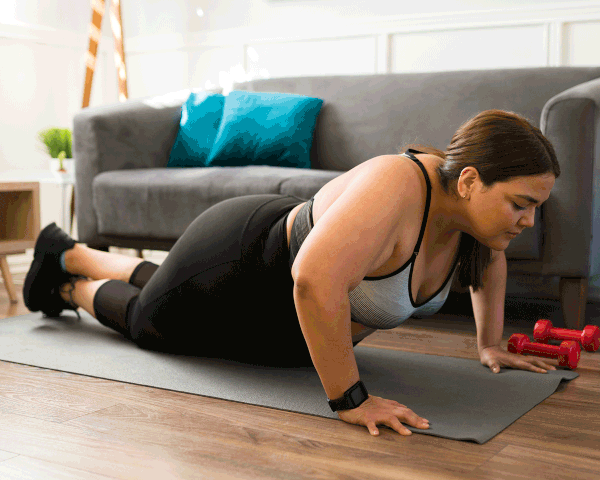
Getty Images
Push-Up Benefits:
The famous push-up works a variety of muscle groups, including your shoulders, chest, upper arms, trunk, glutes, and legs, says Greg Robbins, CrossFit L2 trainer and owner of Feast Fitness + Nutrition. However, push-ups aren’t just great for building and toning muscles. They can actually lower your risk for heart disease, according to research. Robbins says that doing push-ups can also help you better complete everyday activities like pushing kids on a swing or pushing a grocery cart.
Related: 3 At-Home Exercises for Stronger Arms—No Gym Equipment Needed
How to Do Push-ups:
“To maximize a push-up’s effectiveness and safety, get into a [high] plank position with your arms extended, and try to maintain that long, straight body position as you allow your arms to lower your body to the floor and press back up,” Robbins says.
Push-ups are one exercise that you can slowly build your strength up with over time, so don’t be discouraged if you can only do a handful of push-ups or need to modify your push-up form at first (here’s how to progress from push-up beginner to push-up pro). Prioritize proper, safe form over everything.
For example, if your chest and arm strength don’t yet permit pressing up off the floor, here’s a smart alternative from Robbins that can achieve similar results: “Find a sturdy, elevated surface such as a table [or counter], and do your perfect form push-up at an inclined angle,” he explains. “You’ll put your hands on that elevated surface instead of the floor.”
Workout 3: Lunges
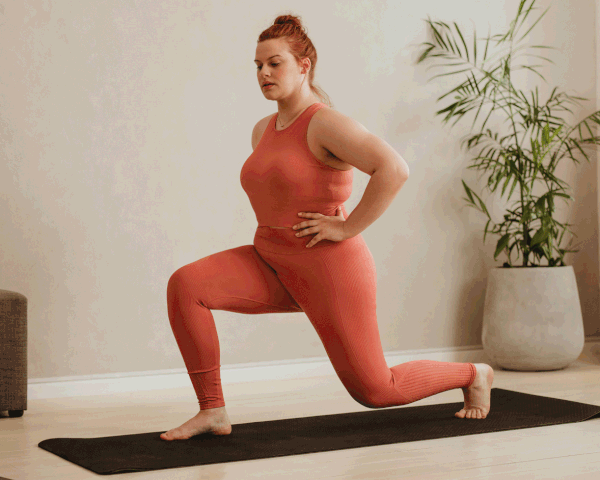
Getty Images
Lunge Benefits:
Lunges are an excellent addition to a full-body workout regimen and can boost lower body strength, especially in the hamstrings and quads.
How to Do Lunges:
As always, to maximize lunge benefits and reduce the risk of injury, it’s important to maintain a proper form.
“For lunges, start in a neutral position with your hands on your hips, feet directly under your hips, and toes pointed straight,” Gaines says. “Step out with your right or left leg, drop your back knee in a 90-degree angle, and explode back up to a neutral position.”
Some tips to master the lunge technique: Keep your chest up and shoulders back throughout the process, Gaines says, and “make sure your front knee doesn’t cross over [cave inward or fall outward] or go in front of your toe.”
Workout 4: Planks
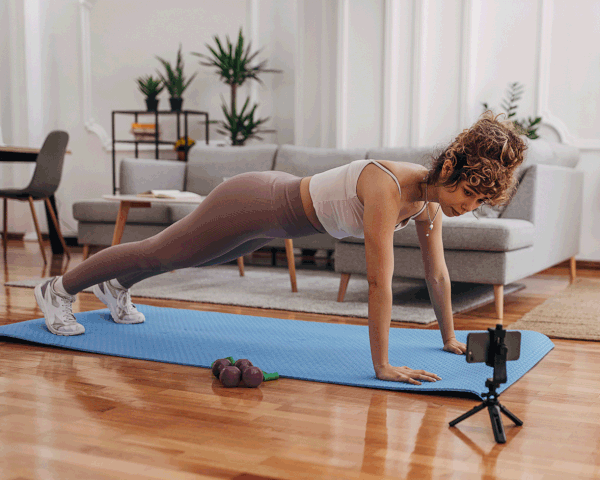
Plank Benefits:
Planks are an excellent way to activate and strengthen your core muscles, which is essential for good posture, spine and pelvic stability, back pain prevention, and many more healthy benefits. “This strengthens your abdominal muscles, oblique muscles, and lower back,” Gaines explains.
As you practice and build core strength, you can start holding your plank position for longer periods of time. Depending on your core strength level, you can either do planks on your elbows (easier) or on your hands (harder).
How to Do Planks:
To do a proper plank, Gaines says to place your elbows or hands directly under your shoulders and extend both legs back behind you with toes flexed. The weight of your body should now be fully supported by your hands (or elbows) and toes. Squeeze your glutes, engage your core, and hold this position for as long as you can, or for a set period of time, such as 30 to 60 seconds.
Related: This 10-Minute Plank Workout Will Fire Up Your Core With Just 5 Moves
Workout 5: Burpees
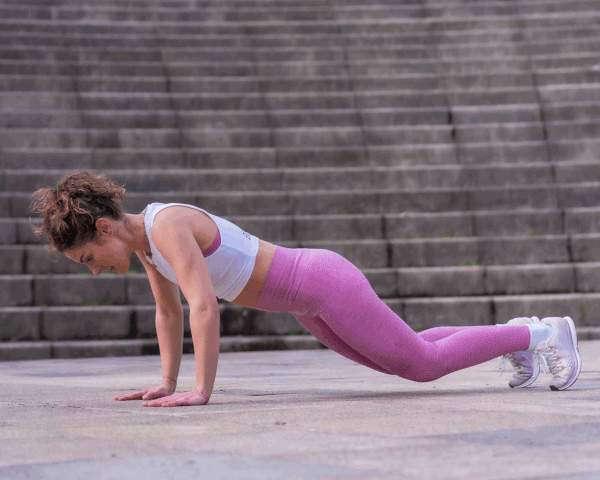
Burpees Benefits:
Burpees are a staple of boot camp-style exercise programs and are also effective for muscle-building and a serious full-body workout. “Burpees work by developing upper body strength with explosive hip and core strength,” Robbins says. They can also increase speed and power, and they’re “an amazing way to improve your all-around endurance.”
How to Do Burpees:
Here’s how to do a perfect burpee: Think of it as a four-part exercise, moving fluidly from a jump, to a squat, to a plank, to a pushup, and then back up the chain again to make one burpee rep.
“Stand tall with your feet shoulder-width apart. Do a partial squat, then lean forward to place your hands on the ground. [Jump] your legs out behind you [into a high plank], then lower yourself to the bottom of the push-up position,” Robbins explains. “Then push your upper body back up with your arms” and jump your thighs and knees back under you, which should get you back up to the partial squat position. “Stand tall or give a little jump to finish the repetition,” Robbins adds.
All five of these exercises can easily be done at home or at your local gym for a full-body workout. While they don’t require any equipment, you can always add resistance bands or light weights for an extra challenge. Don’t forget, you can always modify your exercises as needed.
Related: Try These Low-Impact Exercises for a Tough, But Joint-Friendly Workout
For more Real Simple news, make sure to sign up for our newsletter!
Read the original article on Real Simple.


